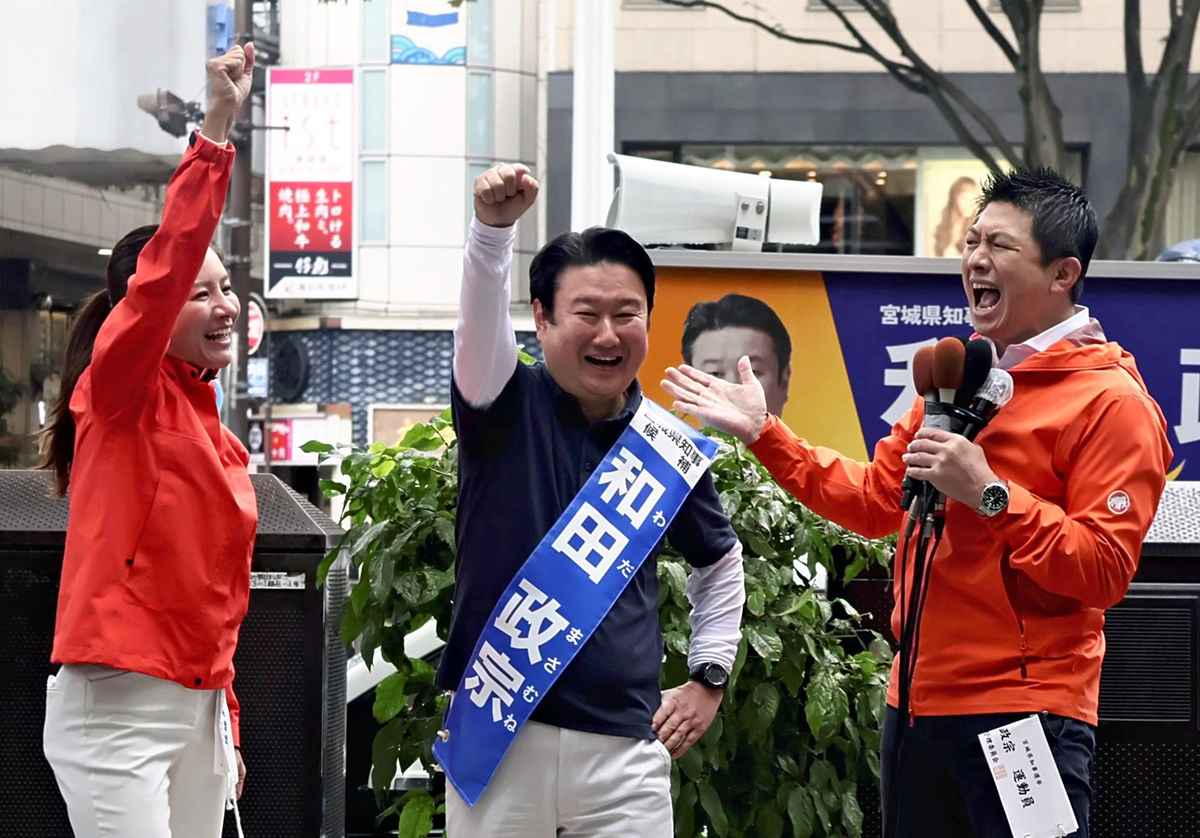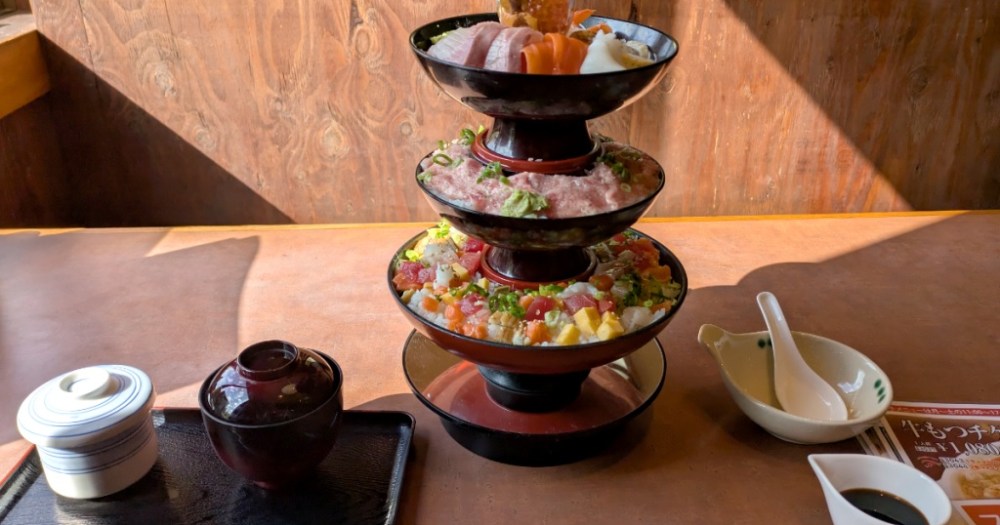The Yomiuri Shimbun
Sanseito leader Sohei Kamiya, right, delivers a campaign speech in Aoba Ward, Sendai, on Oct. 25 in support of Masamune Wada, center, during the Miyagi gubernatorial election.
By Shunichi Okada and Wataru Hayashi /
Yomiuri Shimbun Staff Writers
1:00 JST, November 3, 2025
SENDAI/TOKYO — Opposition party Sanseito is trying to increase its presence through local elections. A candidate backed by Sanseito fought a close race with the incumbent governor in the Oct. 26 gubernatorial election for Miyagi Prefecture, and many candidates from the party have won with large vote counts in prefectural and municipal assembly elections.
Sanseito’s aim is to strengthen its foothold in regional areas and thereby gain more seats in the next House of Representatives election.
Success in Sendai
On Oct. 25, a day before votes were cast in the Miyagi gubernatorial election, Sanseito leader Sohei Kamiya delivered a street speech in Sendai to support Masamune Wada, who was once a former House of Councillors member for the Liberal Democratic Party.
“Many people gathered and spread the word online, which has boosted Wada’s approval rating and driven the incumbent into a corner,” Kamiya said to a large audience.
Wada called for a change in the prefectural politics of incumbent Gov. Yoshihiro Murai, who was vying for his sixth term in office, and Sanseito backed him. Murai ultimately won but only by about 16,000 votes over Wada.
Wada also received more votes than Murai in all five of Sendai’s electoral districts.
Online and offline campaigning
One factor that is believed to have helped Wada come so close is online campaigning, an area in which Sanseito excels. Kamiya repeatedly spoke in Sendai, which is home to many voters, and his speeches were live-streamed on the party’s official video-sharing channel, which has about 550,000 subscribers.
Short videos and Wada’s messages were also spread widely online, partly at Kamiya’s instigation.
According to an analysis by The Yomiuri Shimbun, using a tool from the U.S.-based company Meltwater, Wada far outnumbered Murai in his posts and reposts on X throughout the campaign period. Wada’s figure grew in tandem with Kamiya’s arrival in Sendai.
Sanseito also devoted significant effort to offline campaigning, drawing on its organizational structure. The vice president of the party’s Miyagi prefectural chapter served as the deputy head of Wada’s campaign headquarters, and Sanseito members and others engaged in such campaign activities as distributing leaflets and putting up posters.
Looking back at the election, Kamiya said, “If we’d mobilized all the party members more, Wada could have caught up with Murai.”
‘93% winning rate’
Sanseito has increased its local assembly seats by steadily winning in prefectural and municipal elections. According to the party, as of Oct. 22, the party’s success rate in local elections is 93.5%, with 43 victories in 46 races.
In the Oct. 19 election for the 16-seat Nomi municipal assembly in Ishikawa Prefecture, a Sanseito candidate was the top finisher. The candidate had run in the Ishikawa electoral district in July’s upper house election and took advantage of her name recognition in the later municipal assembly election.
Many other Sanseito candidates have won local assembly elections with large vote counts. For example, another candidate from Sanseito ran in the Oct. 12 election for the 22-seat Azumino municipal assembly in Nagano Prefecture and was elected with the second-most votes.
The party fields carefully chosen candidates in elections for prefectural or municipal assemblies with many seats in an effort to strengthen the party’s support base, while also actively fielding candidates for local assemblies that have a shortage of candidates.
Sanseito’s significant progress appears to be due to this skillful strategy, according to a senior member of the main opposition Constitutional Democratic Party of Japan.
Challenges remain
However, Sanseito also faces the problem that a great deal of disinformation and slander about rival candidates and their camps flooded social media during the Miyagi gubernatorial election.
An image of Murai’s face with “14 misdeeds” written on it was spread online, including such false information as “He greatly welcomes mega solar power” and “Miyagi Prefecture will be the hometown of Zambia.”
Kamiya said: “What we said was exaggerated and spread online, but it was not done intentionally by our camp. We, too, were subject to groundless criticism and false information.”
An LDP prefectural assembly member who supported Murai consulted with the prefectural police after receiving threats. Given this situation, Itsunori Onodera, the chairman of LDP’s Miyagi prefectural chapter, on Friday asked the LDP headquarters to strengthen countermeasures Friday.
“We have great concerns about the fair operation of elections,” Onodera said.





